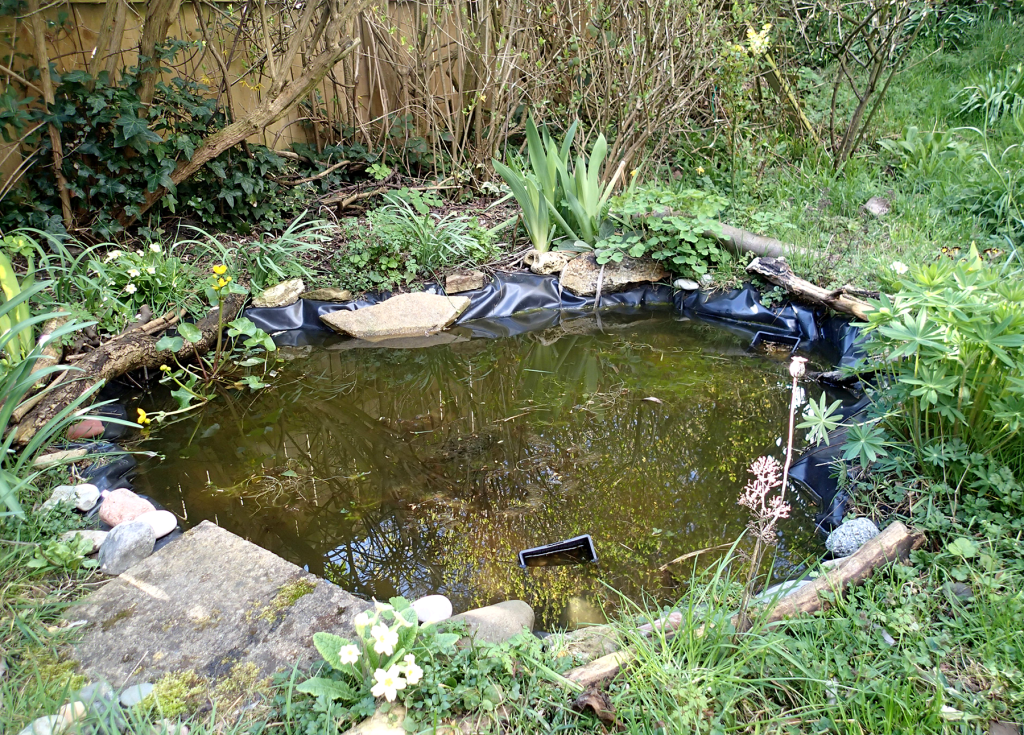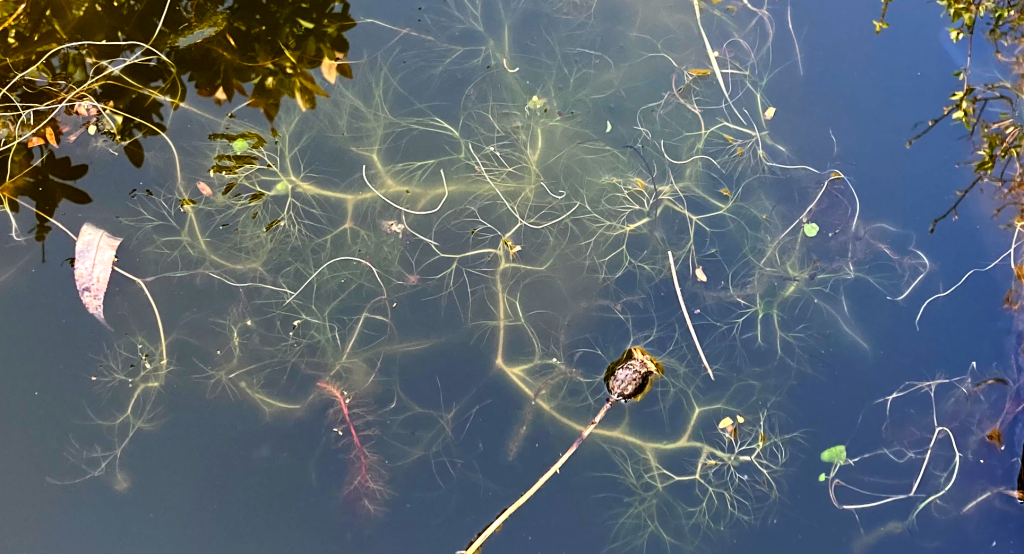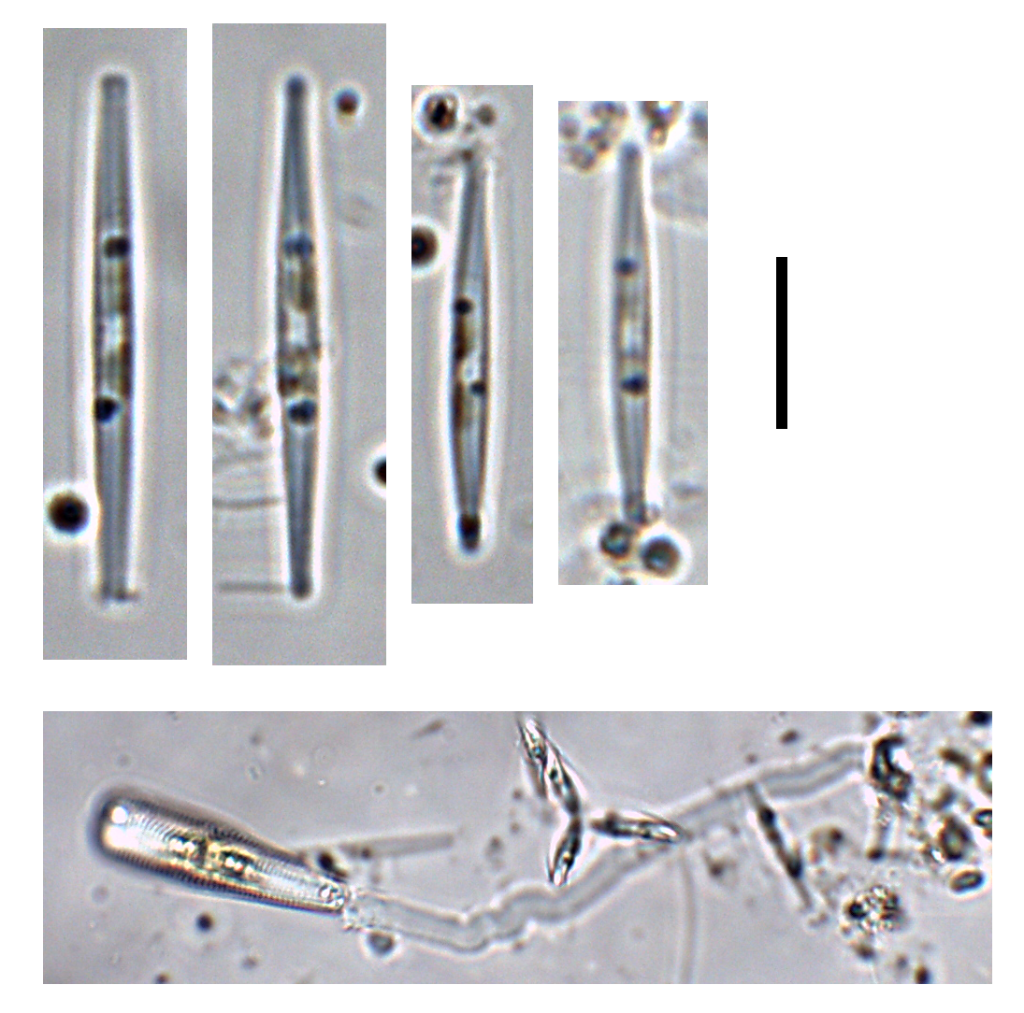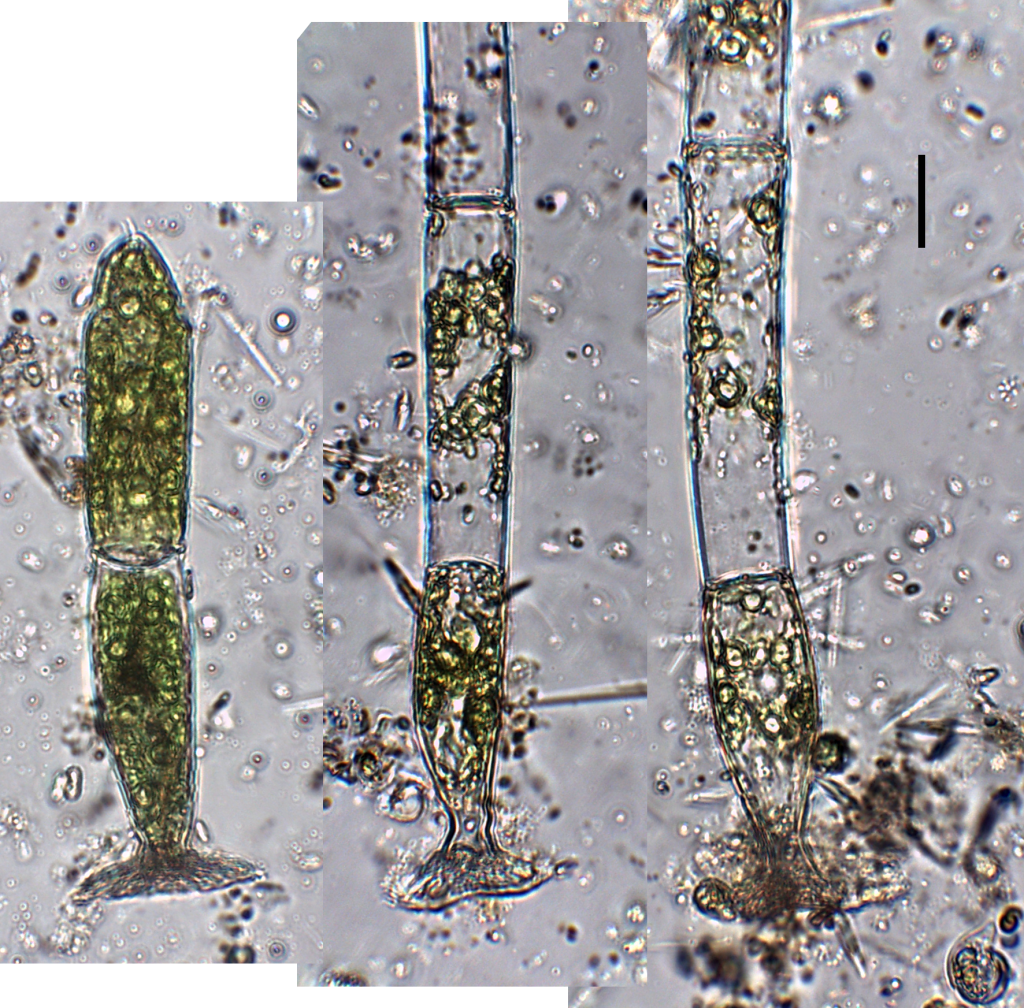I’m staying close to home for the next post. Last year we dug a pond in our garden and planted some aquatic and amphibious plants around the margins. I’ve been intermittently curious about the algae that have colonised the pond but have not actually found the time to put any samples under my microscope until now. Then, a couple of weeks ago, we had our first sighting of frog spawn in the pond. When I looked closely at this, I was surprised at how green the water was, bearing in mind the time of year and the scarcity of nutrients (we don’t use any artificial fertilizers in our garden). I also noticed that the water crowfoot that we added last year had some tangles of green algae already and decided to take a closer look at these.
Water crowfoot (Ranunculus sp.) in our pond (shown in picture at top of post). The patch is about 30 cm across.
I shook a small piece of the Ranunculus in a plastic bottle along with some of the pond water in order to dislodge the attached algae and had a look at what I found under the microscope. The most abundant, in terms of numbers, was needle-like cells of the diatom Fragilaria gracilis which was attached both to the cells of the filamentous alga (Oedogonium) and, I presume, to the Ranunculus leaves. There were also a lot of small green algae – probably responsible for the green colour of the water but too finnicky to identify easily. They will have to wait until another day.
Fragilaria gracilis (top row) and a stalked Gomphonema (bottom) from periphyton associated with Ranunculus and Oedogonium in our garden pond, April 2023. Scale bar: 10 micrometres (= 1/100th of a millimetre).
What attracted my attention, however, was short filaments (“germlings”) of Oedogonium each with a flat circular disc at one end. I wrote recently about how the green alga Mougeotia stayed attached to the river bed by tangling its filaments amidst mats of a cyanobacterium. Oedogonium has a slightly more sophisticated option: a dedicated basal cell. I suspect that these germlings (which arise from zoospores – see “Algae behaving selfishly …”) were originally attached to the leaves of the Ranunculus but had been dislodged by my vigorous agitation. Some had grown into longer filaments, a few of which had become detached from the Ranunclus plant.
A series of papers by Jeremy Pickett-Heaps describes this process in detail. The zoospore (illustrated in my earlier post) is typically egg shaped with a ring of short flagellae near the narrow end (the “dome”). Pickett-Heaps describes the zoospores elongating, then (literally) shaking off the flagellae. A number of rhizoids then grow out from the dome and extend across the substratum and secrete material that becomes the holdfast which is, when deposition is complete, a flattened cone anchoring the young filament to a surface. This series of papers was published in 1972, so must be based on work done a year or so earlier which means that Pickett-Heaps must have had the images of the moon landings in his head when he was thinking about these processes. I cannot read description of an ungainly zoospore descending to a hitherto unexplored plant surface without Strauss’ Also Sprach Zarathustra* running through my head.
Germlings of Oedogonium each with a flattened basal cell, collected from our garden pond in April 2023. Scale bar: 20 micrometres.
I’ll finish where I started, pondering the green water of our pond. There is a mindset amongst some aquatic ecologists and in the media that lots of algae must mean lots of nutrients. The truth is much more nuanced than that. The amount of food in your larder is the consequence of how much you put in and how much you take out and the same is true of aquatic habitats. Our small, still maturing, pond doesn’t have many nutrients going in, but nor are there many invertebrates to eat the algae that do manage to grow. We’ve also found some frog spawn amongst the fronds of water crowfoot and I’m fairly sure that our “larder” of nutritious algae is soon going to be emptied by hordes of rapacious tadpoles.
* the iconic theme music for the BBC’s coverage of the Apollo missions.
Some other highlights from this week:
Wrote this whilst listening to: new albums by Daughter (Stereo Mind Game) and boygenius (the record)
Currently reading: Inshallah United: A Story of Faith and Football by Nooruddean Choudry.
Cultural highlight: After Impressionism: Inventing Modern Art. Exhibition at the National Gallery that follows artistic developments either side of Maurice Denis’ 1890 statement that painting was “essentially a flat surface covered with colours assembled in a certain order.” That was on Monday. On Friday, I was at the Sage, Gateshead (again) for the Royal Northern Sinfonia, whose programme included Beethoven’s Triple Concerto featuring Sheku Kanu-Mason on cello. Good week.
Culinary highlight: risotto made with celeriac and blue cheese.





Pingback: Different class … – microscopesandmonsters